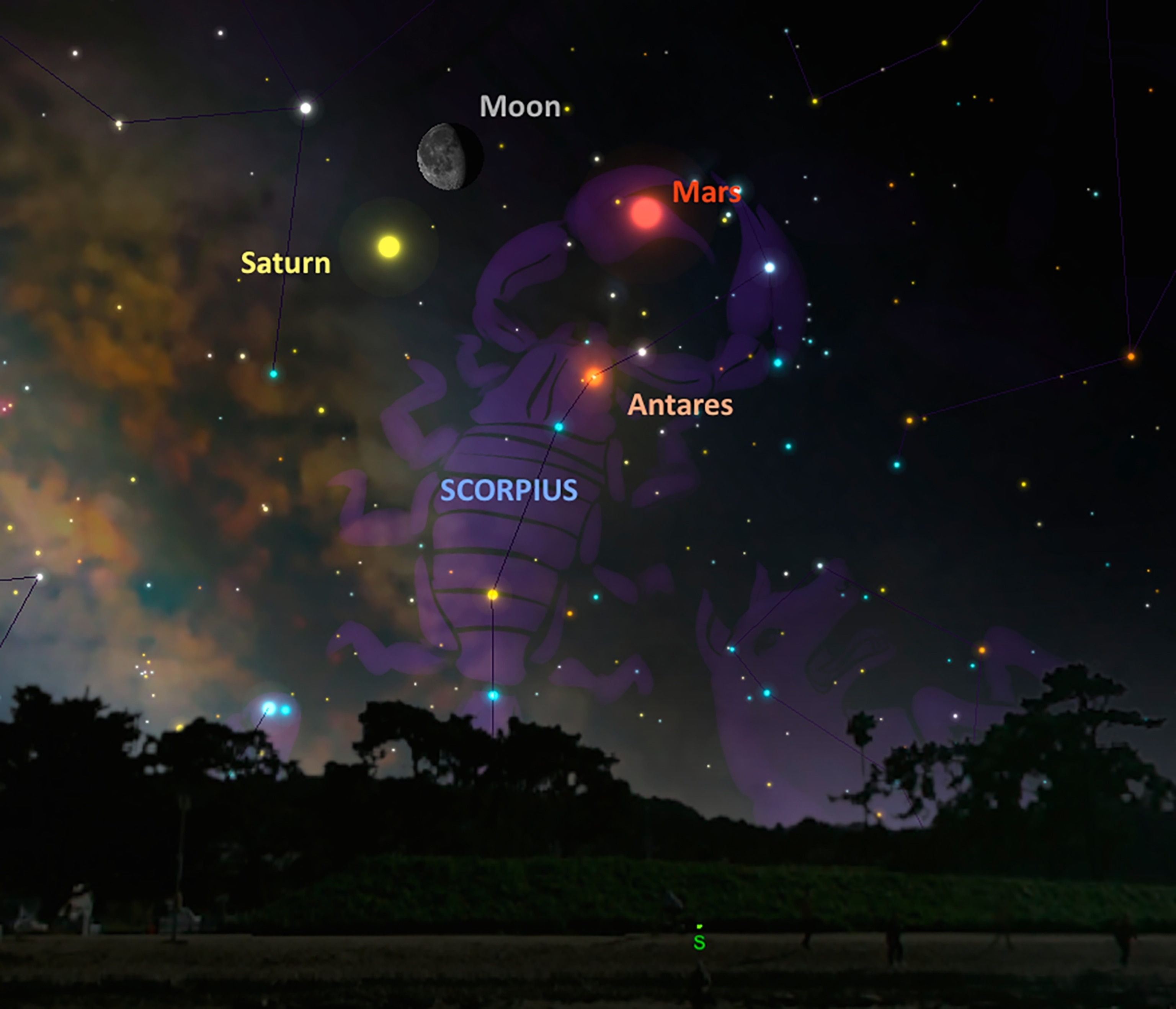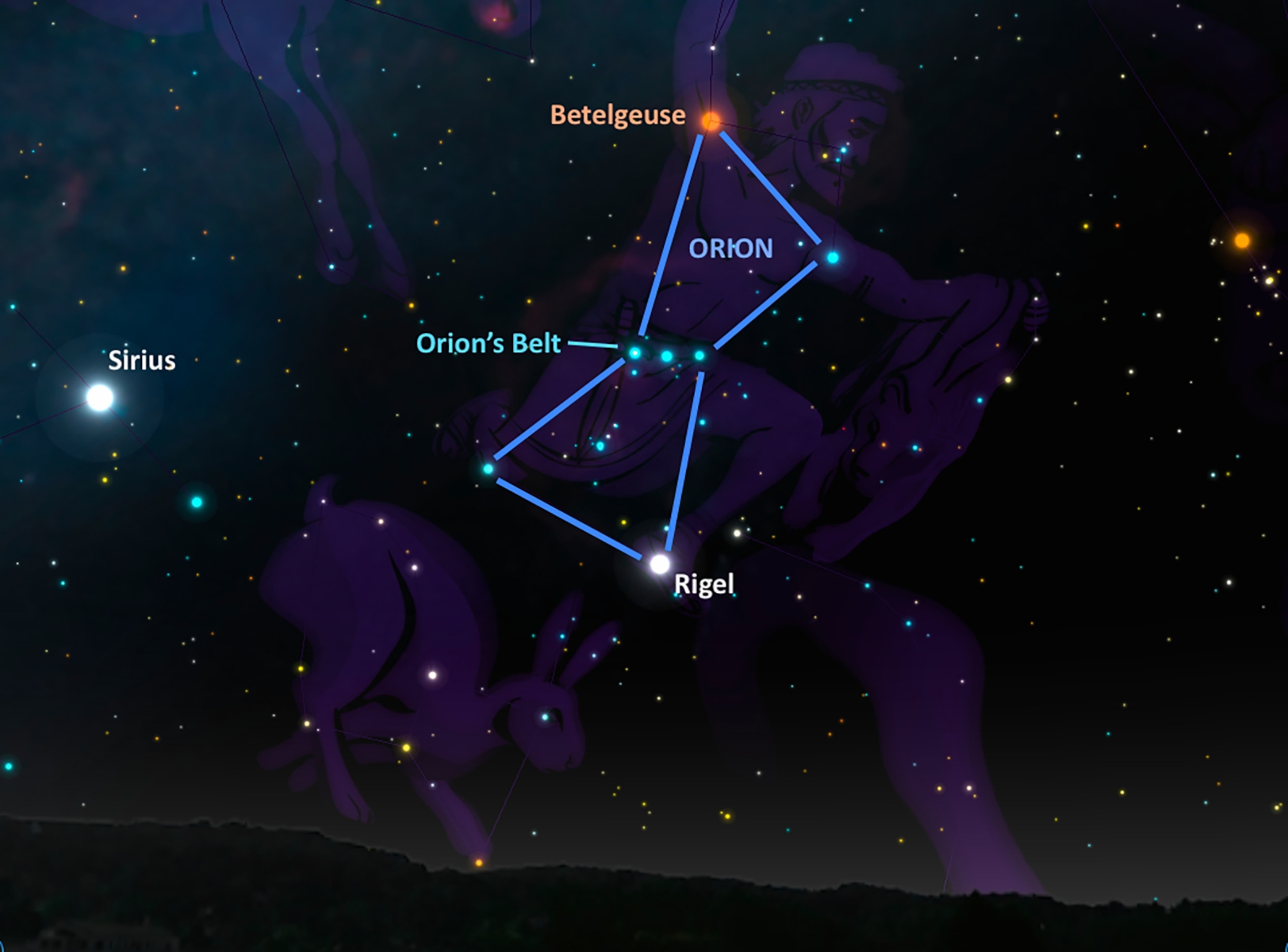
This Week’s Night Sky: See Moon Pose with Mars and Saturn
Catch the lineup and look for the glow of the zodiacal lights.
Zodiacal Lights. For two weeks beginning Monday, March 28, sky-watchers who can make it out of the city and its bright lights will get a chance to see a glow in the night sky called the Zodiacal lights.
With the waning moon dropping out of the sky by early evenings, this is the best chance for Northern Hemisphere observers to see the zodiacal lights, which are some of the most challenging nighttime lights to catch.
This ethereal glow is caused by sunlight reflecting off countless dust particles scattered along the plane of the solar system, between the planets. If you can get into the dark countryside, look for a pyramid-shaped glow—fainter than the Milky Way—rising above the western horizon after sunset.

Moon March. Before dawn on Tuesday and Wednesday, March 29 and 30, the moon will be gliding past the super-bright star-like trio of Mars, Saturn, and Antares in the constellation Scorpius in the southern sky.
First up on Tuesday, the waning gibbous moon will be parked to the upper right of golden Saturn. The two will be only four degrees apart—less than the width of your fist held at arm’s length.
Train even the smallest of backyard telescopes on Saturn and you can get an eyeful of its famous rings and a few of the brightest of its 62 moons. But it turns out that these iconic jewels may have been relatively recently acquired.
Just last week a new theory from the SETI Institute and the Southwest Research Institute (SwRI) suggests that while the planet is about 3.5-4 billion years of age, many of its moons and majestic rings may be no older than 100 million years, around the age of the dinosaurs.
Supercomputer models show that the current arrangement of large inner moons and rings was possibly formed sometime during Earth’s Cretaceous Period, 66 to 145 million years ago, by some cataclysmic event that pulverized a primordial set of moons that circled the gas giant. And it’s from those remnants that many of today’s moons and the entire set of rings we see today formed.

Lunar Lineup. By Wednesday morning, you will notice that the moon has slid down to the lower left of Saturn, forming a straight line-up that includes ruddy Mars to the ringed planet’s right.
Just below the lineup is the 600 light-year distant orange star Antares, which takes its name from Greek meaning ‘equal to Mars’ due to its similar appearance.

Sinking Orion. As springtime begins, traditional winter constellations are beginning to set in the west and fade in the bright evening twilight. So with the moon out of the night sky, Saturday, April 2, will make for a great opportunity to catch sight of the brightest winter constellation Orion, the hunter.
Orion’s star-studded figure is probably the most recognizable pattern in the heavens and is easy to find even in light-polluted cities simply by identifying his belt: a straight line of three bright stars. Surrounding the stellar belt are four stars marking the shoulders and knees of the giant. This constellation is found about due west around mid-evening at this time of year.
Clear skies!





